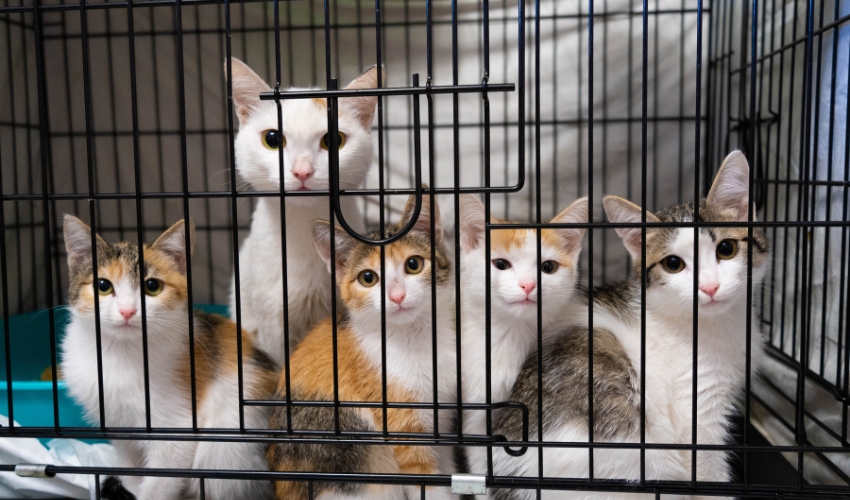Pancreatitis is a painful and potentially life-threatening disease that affects cats. It is an inflammatory condition of the pancreas, an organ responsible for producing enzymes that aid digestion and regulate blood sugar levels. While pancreatitis can occur in cats of any age or breed, it is more commonly seen in middle-aged to older cats, particularly those who are overweight or have a history of gastrointestinal problems. Unfortunately, there is no cure for pancreatitis, and the severity of the disease can vary significantly from one cat to another. While some cats may recover with supportive care and management of the condition, others may suffer from chronic or recurrent bouts of pancreatitis. In some cases, euthanasia may be the most humane option for cats with pancreatitis. Here are some factors to consider when making this difficult decision.
Severity of Symptoms
The severity of a cat’s symptoms is one of the most important factors when deciding whether to euthanize a cat with pancreatitis. Mild cases of pancreatitis may cause vague symptoms like vomiting, diarrhea, and lethargy, but with appropriate treatment and management, the cat may recover fully.
However, severe cases of pancreatitis can cause intense abdominal pain, anorexia, dehydration, and other complications such as jaundice, sepsis, and organ failure. Cats with severe pancreatitis may require hospitalization, intravenous fluids, pain management, and other supportive care. If a cat’s symptoms are severe and unresponsive to treatment, and its quality of life is significantly impacted, euthanasia may be the kindest option.
Duration of Symptoms
Pancreatitis can be acute or chronic, with symptoms lasting for days, weeks, or even months. Acute pancreatitis is a sudden onset of symptoms triggered by a high-fat diet, medications, infections, or trauma. Acute pancreatitis can be severe, but many cats can recover fully with prompt treatment.
Chronic pancreatitis, on the other hand, is a long-term condition that may cause intermittent symptoms over time. Cats with chronic pancreatitis may experience periods of remission where they appear to be feeling well, followed by flare-ups of symptoms. The duration of a cat’s symptoms is essential when deciding whether euthanasia is the best option. Cats with chronic pancreatitis may require ongoing management, including dietary changes, medication, and monitoring for complications such as diabetes.
Quality of Life
The most crucial factor to consider when deciding whether to euthanize a cat with pancreatitis is its quality of life. A cat’s quality of life refers to its overall well-being, including its physical comfort, emotional state, and ability to carry out normal behaviors. When a cat’s quality of life is severely compromised by pancreatitis, euthanasia may be the kindest option.
Signs that a cat’s quality of life may be suffering due to pancreatitis include:
- Refusal to eat or drink
- Extreme lethargy or weakness
- Vomiting or diarrhea that does not improve with treatment
- Difficulty breathing or increased respiratory effort
- Inability to stand or walk
- Signs of pain
If a cat’s quality of life is significantly impacted by pancreatitis, it may be time to consider euthanasia. A veterinarian can help assess a cat’s quality of life and guide when euthanasia may be appropriate.
Financial Considerations

Pancreatitis can be expensive, particularly if a cat requires hospitalization, intravenous fluids, and other supportive care. Considering the financial implications of treating pancreatitis when deciding whether to euthanize a cat is crucial. While it may be challenging to consider, it is vital for pet owners to realistically evaluate their ability to provide ongoing care and treatment for their cat with pancreatitis. If the financial burden of treatment is too significant, or if a pet owner cannot provide the necessary care for their cat with pancreatitis, euthanasia may be a difficult but necessary decision.
This decision should not be made lightly. Pet owners may benefit from discussing their options with a veterinarian or other trusted advisor to ensure that they make the best decision for their cat’s well-being and financial situation.
In Summary
Making end-of-life decisions for a pet with pancreatitis can be emotionally challenging for pet owners. Pet owners should work closely with a veterinarian to monitor their cat’s condition and adjust its treatment plan. When the cat’s symptoms become severe to the point that its quality of life is already deteriorating, it may be time to consider euthanasia. It is also important to consider the financial implications of treating pancreatitis, as it can be costly.
Ultimately, the decision to euthanize a cat with pancreatitis is profoundly personal and should be made in consultation with a veterinarian and other trusted individuals, such as family members or friends. While this decision is never easy, it can be helpful to remember that euthanasia is a compassionate option to end suffering and ensure that the cat passes peacefully and with dignity. In the end, what matters most is that pet owners prioritize their cat’s well-being and comfort throughout the decision-making process.











